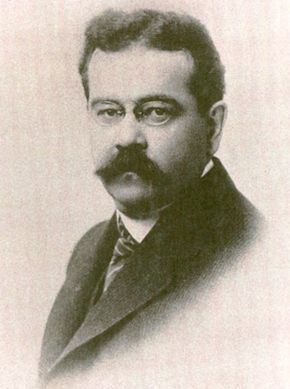Charles Fort, the First Ufologist
Although these strange sky objects were reported with increasing frequency, the press and the scientific community treated each sighting as a one-time occurrence. There was no sense that such events, far from being isolated, were part of a larger phenomenon. Even the airship wave of 1896 and 1897 quickly passed out of the public's memory. But an eccentric American writer, Charles Fort (1874-1932), finally put it all together, becoming the world's first ufologist.
Born in Albany, New York, Fort was working as a newspaper reporter before age 20. Determined to become a writer, he traveled the world searching for experiences to write about. In South Africa Fort contracted a fever that followed him back to the United States. He married his nurse, Anna Filing, and embarked on a career as a freelance writer. Fort spent hours on end in the library pursuing his interests in nature and behavior. While paging through old newspapers and scientific journals, he began to notice, among other repeatedly chronicled oddities of the physical world, reports of strange aerial phenomena. Taking voluminous notes, he eventually turned out four books. The first three --The Book of the Damned (1919), New Lands (1923), and Lo! (1931) -- dealt in part with UFO reports.
Advertisement
An intellectual with an impish sense of humor, Fort was fond of constructing outrageous "hypotheses" that could "explain" his data. But beneath the humor Fort was trying to make a serious point: Scientists were refusing to acknowledge that the world was full of weird phenomena and occurrences that did not fit with their theories. "Scientific" attempts to explain away such strange events as UFO sightings were laughably inadequate; their explanations, Fort wrote, were no less crazy than his own. "Science is established preposterousness," he declared. "Science of today -- superstition of tomorrow. Science of tomorrow -- superstition of today."
Behind the joking, however, Fort suspected that sightings of craftlike objects in the air indicated extraterrestrial visits to the Earth. Yet he also understood humanity's resistance to such a fantastic, even threatening notion. In a letter published in the September 5, 1926, issue of The New York Times, Fort offered some prescient observations. Extraterrestrial beings would not have to hide their activities, he wrote, because if "it is not the conventional or respectable thing upon this earth to believe in visitors from other worlds, most of us could watch them a week and declare that they were something else, and likely enough make things disagreeable for anybody who thought otherwise."
